Important archaeological discoveries in Rome, which emerged during the latest excavation campaign at the site of Via Appia Antica 39, located between the first and second miles of the Via Appia Antica, there where the consular road leaves the Urbe as it crosses the Almone valley to project into the Roman suburbs: this is where one of the most densely packed stretches of the Regina Viarum lies. A physical and symbolic boundary that separated the city from its outer territories and that, since antiquity, has had a strong cultural and religious significance. It is no coincidence that right here was an important area of worship (the nymph Egeria was worshipped) and there were therefore important buildings such as the sanctuary of Mars Gradivo, and that, according to Christian tradition, the meeting between St. Peter and Christ took place. An area of very high historical and spiritual value, hitherto never explored with archaeological systematicity and lacking a structured project for its valorization and public enjoyment.
It is precisely in this context that the “Appia Antica 39” excavation project, conducted in the area of the so-called Sepulchre of Geta, came to life. The initiative was born thanks to a concession granted by the Appia Antica Archaeological Park (Ministry of Culture - DG ABAP DD 679 of May 31, 2022) and is part of the ECeC Laboratory - Cultural Heritage and Community of theUniversity of Ferrara. Financially supporting the venture are the Patrum Lumen Sustine Foundation - PLuS Stiftung and Roma Città Metropolitana.
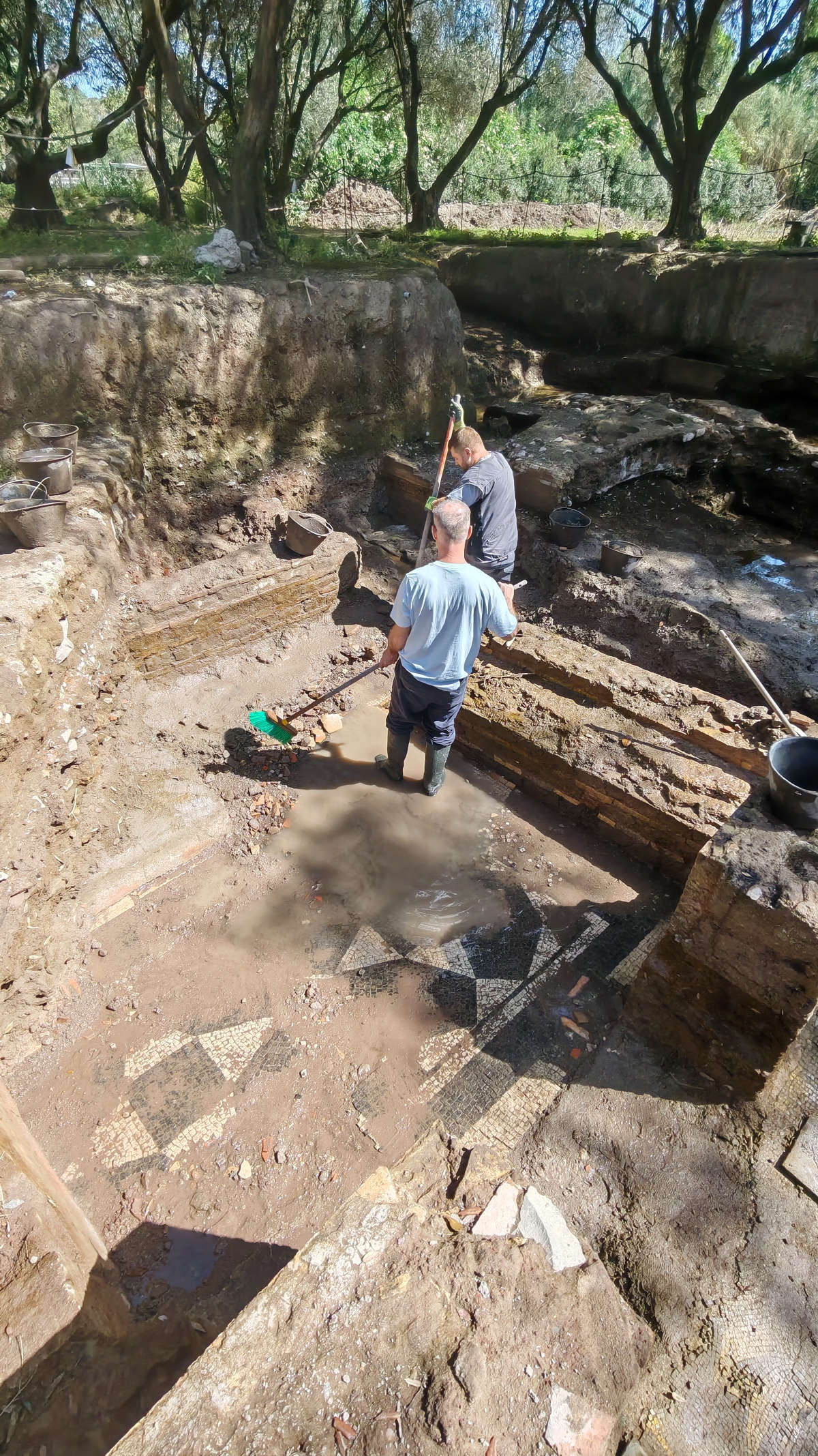
After five excavation campaigns carried out between September 2022 and October 2024 with a predominantly didactic character, with the participation of male and female students from various Italian and European universities with the aim of acquiring knowledge and training in archaeology, the 2025 edition has taken on a completely different character. Due to the critical hydrogeological issues that endangered the preservation of the site, the investigations were entrusted exclusively to professional archaeologists who decided to open the campaign earlier (i.e., in spring) than the usual periods (late summer). In charge of operations was Dr. Fabio Turchetta of the company ARCHEO, while the scientific direction remained in the hands of Professor Rachele Dubbini, professor of Classical Archaeology at the University of Ferrara.
The decision to open the campaign early was dictated by protection needs. In fact, the presence of the nearby Almone River and the exceptional rise of groundwater, favored by the copious winter rains, had almost completely submerged the structures that had emerged in previous years. An urgent problem, considering the depth at which the unearthed monuments are located. Thus, in April and May action was taken to complete the ongoing investigations and document the structures, reaching down to the ancient floor levels, often covered with valuable mosaic decorations. And it was from this context that the discoveries came.
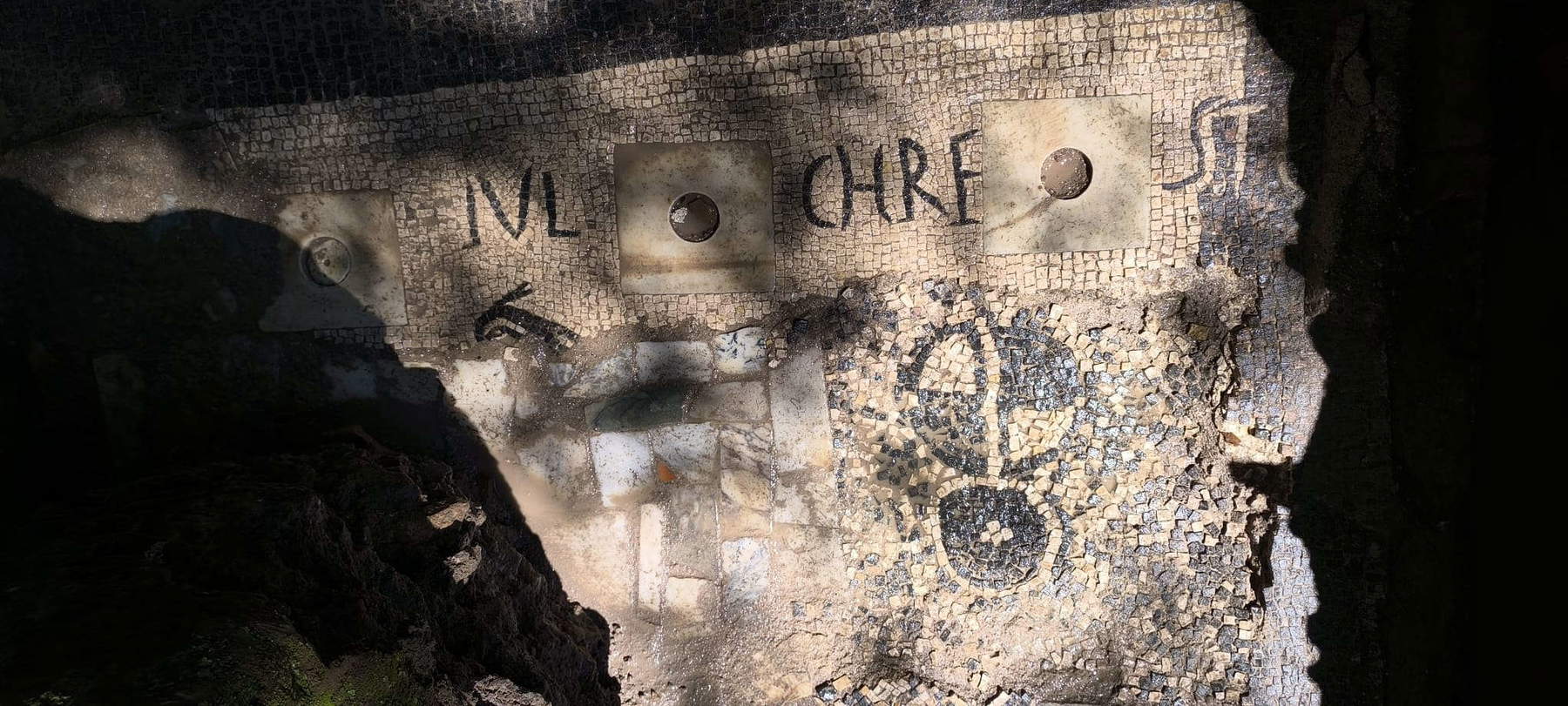
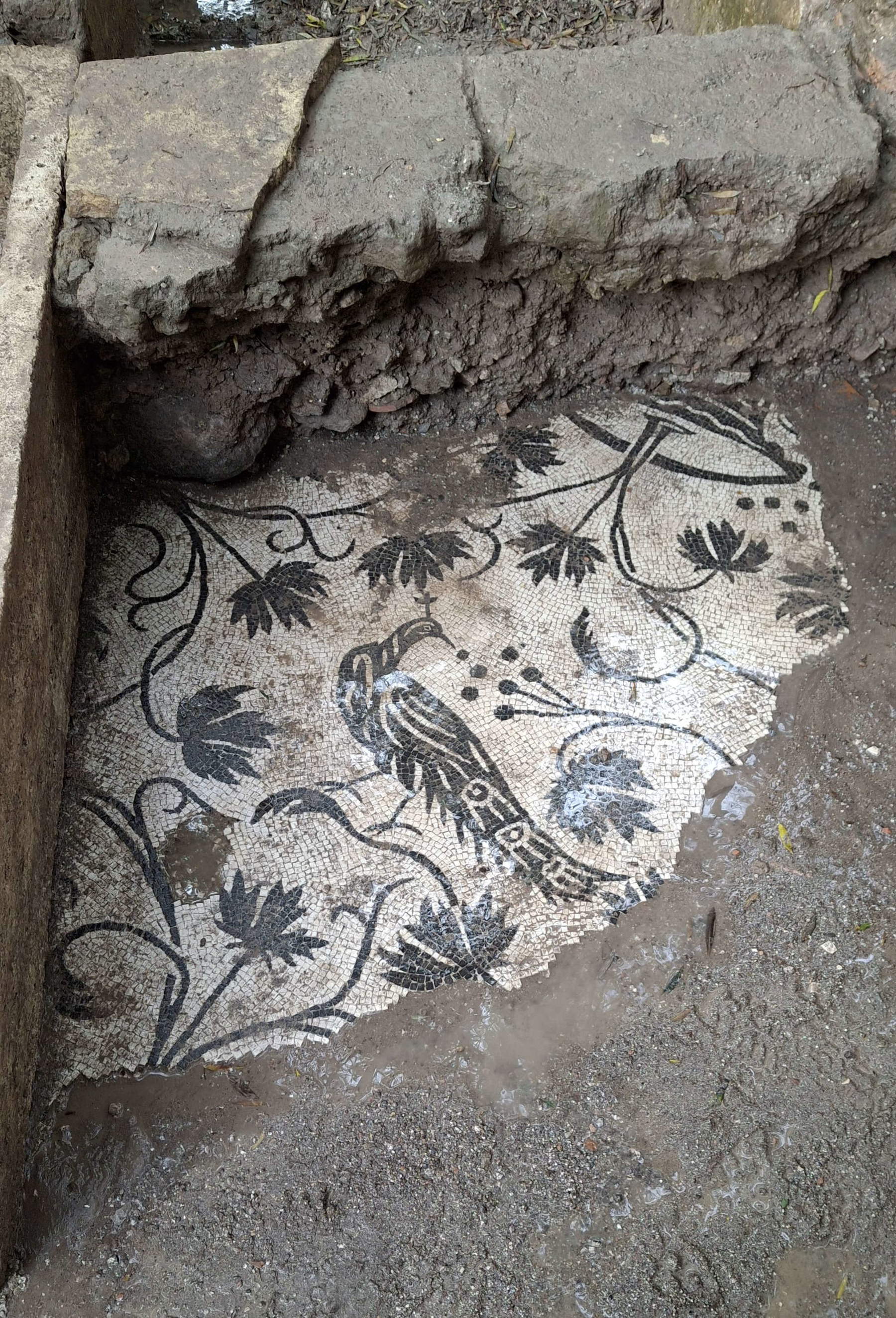
The monuments that have emerged show striking similarities between them: they share the same orientation, aligned with the Appian Way, and they all belong to the same architectural type. They are single-cell buildings, arcosolium funerary monuments (i.e., with a burial area recessed into a niche with an archway) made to accommodate both inhumations and incinerations. The arcosoli, visible at floor level, are located above the formae (pits) for inhumation burials, while the walls are punctuated by niches for cinerary urns. This was a widely used pattern in mid-imperial Rome, consisting of medium-sized burial chambers with a quadrangular plan, walls of brickwork left exposed, and window openings on either side of the central epitaph. Inside, the walls were to be frescoed and the floors embellished with mosaic decorations.
During this phase of the excavations, several mosaics were found, distinguished by technique and stylistic evolution. The black and white tiles, smaller in size in the older versions and larger in the later remakes, reveal a layered production. Of particular interest is the floor of the building in which the marble altar was found, now on display with its lid at the Santa Maria Nova Museum (Appia Antica Archaeological Park). Here, a geometric frame defined a field with plant motifs, likely centered around a figurative emblem now lost. Over time, the mosaic underwent numerous reworkings: schematic insertions, simplified geometric elements and an epigraphic field with the names of the deceased, testifying to the prolonged use and continuous reinterpretation of the funerary space.

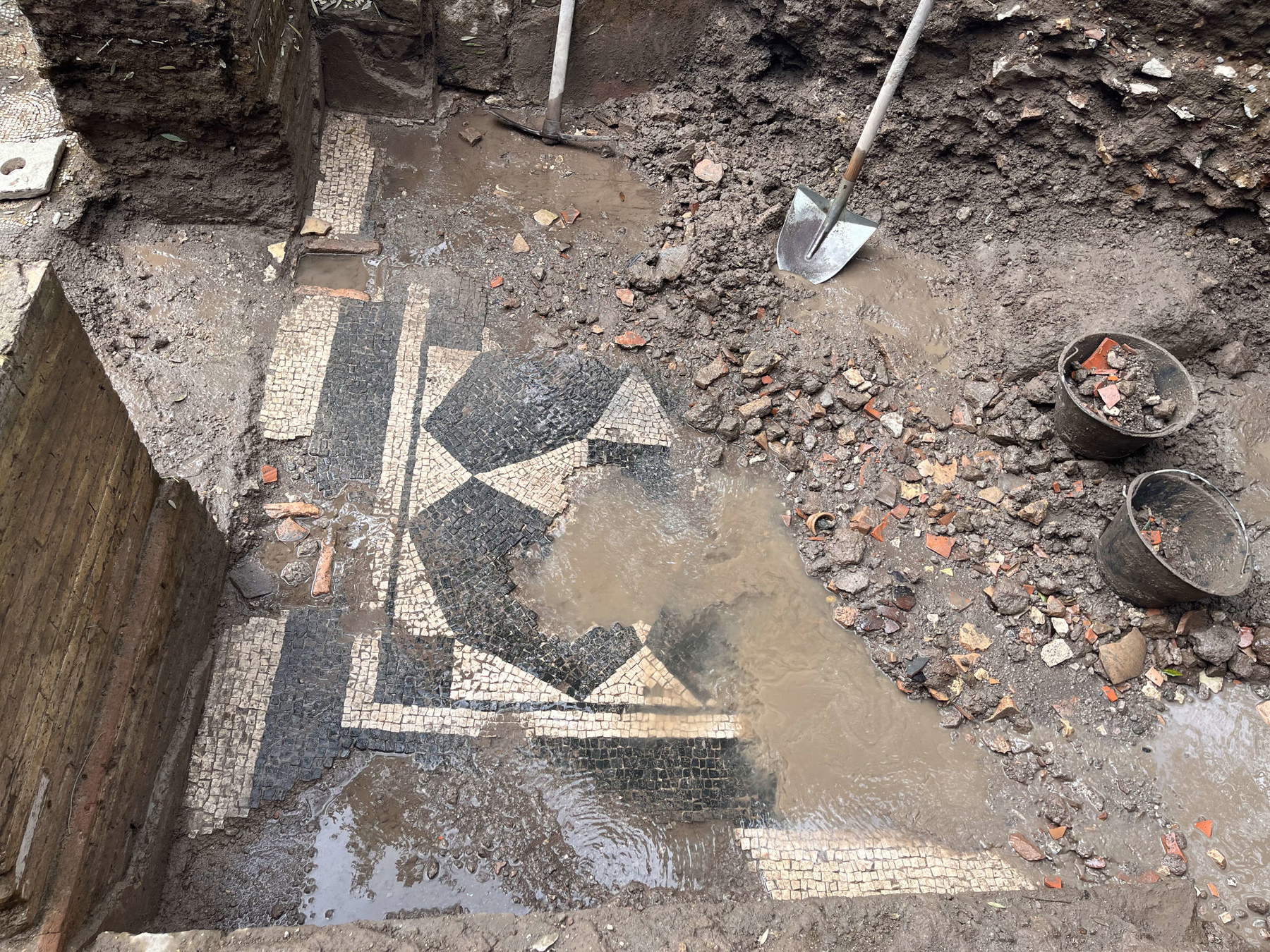
In front of this building, a space emerged whose function remains uncertain, but whose mosaic pavement with hexagonal motifs suggests a later chronology than the plant mosaic. In a second building, too, the remains of the original floor, with trident and triangular cornices, have been overwritten by later renovations, which include sketchily executed circular geometric motifs and reclaimed marble inserts. Notable in both structures is the presence of epigraphic fields, probably indicating the names of the deceased, associated with holes for tubuli, tubes, usually made of terracotta, that were used to pour offerings and libations to the souls of the departed.
In only two cases was it possible to observe better-preserved central decorations. In one mosaic, badly damaged by later spoliation, a bird can be glimpsed, but it is difficult to reconstruct the original scene. Decidedly more telling is the mosaic that emerged from the last excavated monument: a fine scene with a peacock pecking a bunch of grapes among vine shoots. It is a highly symbolic image, linked to the cycle of life and hope in immortality, which was widespread in late antique funerary contexts.
The campaign officially ended on May 31, 2025, but the work of archaeologists is far from over. Analysis of the monuments, artifacts and data collected over the years is only just beginning. In the meantime, the team invites enthusiasts and curious people to follow real-time updates on the official social networks of the Appia Antica 39 project, active on Instagram and Facebook, so as not to miss the next promising revelations.
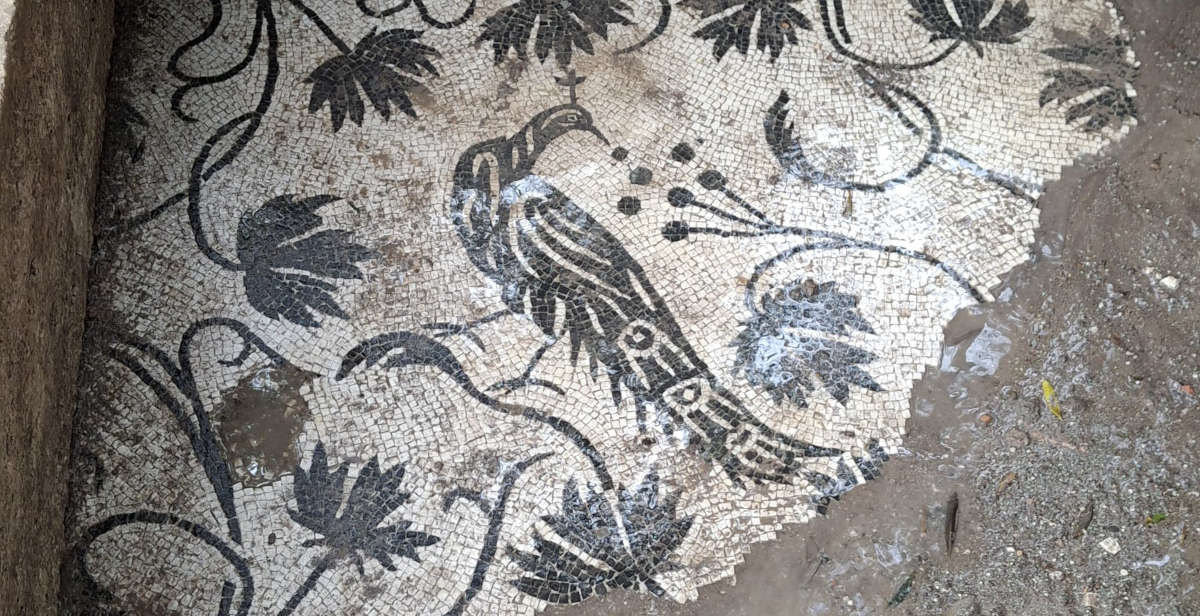 |
| Rome, major discoveries on the Appia Antica: mosaics and funerary monuments unearthed |
Warning: the translation into English of the original Italian article was created using automatic tools. We undertake to review all articles, but we do not guarantee the total absence of inaccuracies in the translation due to the program. You can find the original by clicking on the ITA button. If you find any mistake,please contact us.